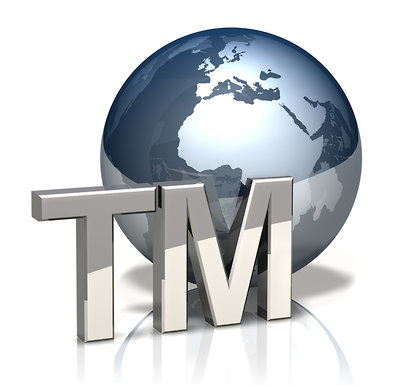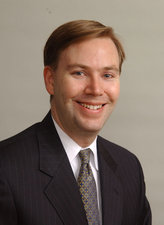Trademark Protection Beyond U.S. Borders
American companies seeking to rapidly grow their business have taken aim at extending their brands to markets outside the United States by: (i) opening foreign sales offices; (ii) partnering with foreign distributors; and (iii) licensing their brands to children’s products companies that focus on countries or regions outside the U.S.1
If foreign markets are on your radar, you should apply for trademark protection in each of the countries where you want your brand to be sold. Registering your trademark in foreign countries is especially important because, unlike the United States, in most countries trademark rights are obtained through registration, not merely by selling products with your band name on them.2 If you delay applying for foreign trademark protection to test foreign markets, a trademark “troll” may apply to the foreign country’s trademark office to register your mark. Then, when your products hit store shelves, you may be sued for infringing the troll’s trademark registration, and you may have to pay the troll to buy the trademark registration in that country for your mark.
Below are some thoughts on filing trademark applications in foreign countries, either individually (original trademark applications), or by use of a centralized filing system that piggybacks your U.S. trademark application or registration to foreign countries (Madrid Protocol extensions).
The Madrid Protocol – A Centralized Filing System for International Registrations
The Madrid Protocol is a treaty among member countries (there are ninety-one as of December 2013) that provides to trademark owners an alternative to filing individual applications with each country’s trademark office where protection is sought. Madrid Protocol applications, which are administered by the World Intellectual Property Organization, allow owners of U.S. trademarks3 to extend their trademark rights4 to any/all member countries by a single application to the U.S. Patent and Trademark Office.
A U.S. trademark owner seeking to extend its rights to one or more member countries simply files a single application with the USPTO and designates the member countries where protection is sought. The trademark owner (as distinguished from the owner of a registration issued by the USPTO) can even take advantage of the Madrid Protocol before a USPTO registration issues (but after a U.S. application is filed).
Advantages of the Madrid Protocol
The goal of the Madrid Protocol was to create a centralized, cost-saving method for extending rights of trademark holders in one member country to others. Compared to the cost and procedure of individual national applications, the Madrid Protocol clearly meets these goals in the following ways:
-
Filing individual applications with each foreign country’s trademark office is typically more expensive and time-consuming than Madrid Protocol applications since each “original” (non-Madrid) application must be filed by local trademark agents/attorneys, and each country’s trademark office may have translation and other requirements for an original application.
-
A Madrid application filed during the pendency of the original U.S. application will have the date of the U.S. filing as its priority date (the date from which your rights begin) in the Madrid member countries, provided that the Madrid application is made within six months of the original U.S. application. While the original application to the USPTO will be processed just like any other application, the trademark offices of the designated member countries have a maximum of 18 months to object to or refuse a Madrid application.
-
Subsequent administrative matters, such as changes to the trademark owner’s name or address, and even a change of the trademark owner,5 can be handled by a single filing.
Disadvantages of the Madrid Protocol
The main disadvantage of the Madrid extension of rights is that a trademark owner can lose its foreign rights in Madrid member countries if the USPTO refuses to issue a registration or if the USPTO registration is canceled within five years. Foreign rights may then be obtained by converting the foreign country designations into individual applications, but that wipes out the savings that the Madrid Protocol provides.
Another disadvantage is that the Madrid extension of rights is based upon the application to, or registration issued by, the home country’s trademark office. For U.S. trademark owners, this may be significant because U.S. trademark law requires narrow descriptions of goods and services while many countries permit broad descriptions. Because a Madrid extension requires that the identical description of goods and services be used, a U.S. mark owner may have to limit its foreign rights (using only the narrow description of goods and services permitted by the USPTO) which it would not have to do if filing an original application in each foreign country.6
Finally, in the event a foreign country’s trademark office objects to a Madrid extension, you may have to hire a local trademark agent/attorney to address the objection, which will likely eliminate the cost savings of the Madrid application.
Helpful Resources
If you’re considering whether a Madrid extension may be the best way to extend your trademark rights beyond the United States, you need to know which countries are members. Here is WIPO’s list of Madrid Protocol Contracting Parties.
You also probably want to know how much a Madrid application will cost. Here is the WIPO Fee Calculator which will show you the cost (in Swiss Francs) by country.
— Footnotes —
1 For information on licensing, see my Giggle Guide article on Licensing in the Children’s Fashion and Products Industry.
2 In the United States, common law use, i.e., sales in interstate commerce, provides limited trademark rights that may prevent subsequent users from using confusingly similar marks even where the subsequent user is the first to apply for a trademark registration from the USPTO. In most other countries, the first to file a trademark application generally obtains superior rights over a subsequent filer, even where the subsequent filer had prior use of the mark in commerce.
3 A trademark owner with an application filed with, or a registration issued by, the U.S. Patent and Trademark Office and who is a national of, has a domicile in, or has a real and effective industrial or commercial establishment in the United States can submit a Madrid Protocol international application through the USPTO.
4 The Madrid Protocol extends to foreign member countries a trademark owner’s rights based upon a registration issued by the owner’s home country trademark office. It is different in significant ways from a registration issued by a foreign trademark office based upon an original application.
5 Note though that a Madrid extension can only be assigned to a person or entity that is based in or has a real and effective industrial or commercial establishment in a member country. For example, Canada is not a member, so the owner of a Madrid extension could not assign its foreign rights to a Canadian company unless that company has operations in a member country.
6 Foreign mark owners seeking a Madrid extension to the U.S. may have the same problem but in reverse. Some countries allow applicants to request protection for its mark as applied to every good or service in the relevant trademark class even though the mark is only used, and will only be used, on some of the goods or services in that class. Thus, a foreign trademark extended to the U.S. by a Madrid application may be subject to challenge for overstating the goods or services on which the mark is or will be used.
Jeremy D. Richardson is an attorney on the fashion industry team at Phillips Nizer. His practice involves representing clients in the children’s apparel, accessories and furniture industries. In April 2005, Jeremy was appointed to the Executive Committee of the American Apparel & Footwear Associations’ (AAFA) Product Safety Council, which most recently has focused its energies on educating its members about the Consumer Product Safety Improvement Act (CPSIA) of 2008.
Jeremy guides start-ups and entrepreneurs through protection of their intellectual property, negotiation of partnerships, and when necessary, the litigation of matters that cannot otherwise be resolved. He has argued before the Second Circuit Court of Appeals and has been admitted pro hac vice to practice in the California Superior Court.
About Phillips Nizer
Phillips Nizer LLP has been engaged in a wide-ranging practice of domestic and international law for over 85 years. Established in 1926 by Louis Phillips, former Assistant General Counsel to Paramount Motion Pictures, and Louis Nizer, considered one of the most outstanding trial lawyers of the twentieth century, the firm consists of lawyers who are well-respected leaders in their fields. Our bond with the fashion and apparel industries began in the 1940s, a relationship that continues to this day almost 70 years later. Our principal office is in New York City, with additional offices in n Garden City and East Hampton. For more information about Phillips Nizer LLP, please visit: http://www.phillipsnizer.com/











